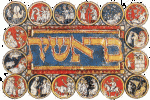
Shabbat Bereshit – Past, Present, and Future
In the last post, Tishrei—Past, Present, and Future, we discussed how all Tishrei holidays – Rosh HaShanah, Yom Kippur, Sukkot, and Simchat Torah – are

In the last post, Tishrei—Past, Present, and Future, we discussed how all Tishrei holidays – Rosh HaShanah, Yom Kippur, Sukkot, and Simchat Torah – are

The months of Tishrei is full of holidays, and they all share a common theme—the unification of time—past, present, and future. It all starts with

Why is this night different from all other nights, asks a child on the Seder night. On this Simchat Torah I asked a different question—why